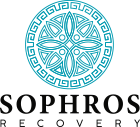Polysubstance abuse is a dangerous condition where an individual uses two or more substances simultaneously, often amplifying their addictive effects and increasing the risk of severe health consequences.
If someone you care about is struggling, identifying the issue early can be life-saving. Fortunately, effective polysubstance abuse treatment is available to help individuals break free from the cycle of addiction and reclaim their lives. Understanding the signs of polysubstance abuse in a friend is the first step toward offering support and encouraging professional intervention.
What Is Polysubstance Abuse?
Polysubstance abuse refers to the misuse of multiple substances at the same time, such as alcohol with opioids, stimulants with depressants, or a combination of illicit drugs and prescription medications. While some individuals intentionally mix substances to achieve a stronger high, others may unknowingly fall into this dangerous pattern.
The simultaneous use of substances can create unique challenges, as the interaction between drugs intensifies their effects and increases the risk of overdose. This complexity makes recognizing the signs of polysubstance abuse particularly important.
Behavioral Signs of Polysubstance Abuse
Changes in behavior are often the earliest indicators that someone may be misusing multiple substances. These shifts can be subtle at first but typically escalate over time.
Common behavioral indicators:
- Frequent risk-taking – Engaging in dangerous activities, such as driving under the influence or mixing substances without considering the consequences
- Erratic mood swings – Unpredictable emotional outbursts or significant shifts in mood that don’t align with normal behavior
- Social isolation – A tendency to withdraw from friends, family, and responsibilities
If you notice these behaviors in someone close to you, it’s worth exploring whether they may be exhibiting polysubstance addiction signs.
Physical Symptoms of Polysubstance Abuse
While behavioral changes are significant, the physical symptoms of polysubstance abuse often provide more tangible evidence of a problem. The physical effects can vary depending on the substances being used, but there are some common warning signs to watch for.
Physical indicators:
- Frequent drowsiness or hyperactivity – Alternating between lethargy and high energy, depending on the substances involved
- Changes in appearance – Neglecting hygiene, drastic weight changes, or a disheveled appearance
- Unexplained injuries – Bruises, burns, or other injuries that the person cannot explain or dismisses casually
Recognizing these physical signs is critical in identifying whether someone might be misusing multiple substances.
Emotional and Cognitive Symptoms
Polysubstance abuse often affects the way an individual processes emotions and thinks. These changes can be alarming and may impact their ability to maintain healthy relationships or make sound decisions.
Emotional and cognitive symptoms:
- Confusion or memory problems – Difficulty focusing or recalling recent events
- Increased anxiety or paranoia – Persistent worry, restlessness, or feelings of being watched
- Depression or hopelessness – Expressing a lack of purpose or showing signs of severe emotional distress
These symptoms, combined with behavioral and physical changes, are strong indicators of a deeper issue. Recognizing these symptoms of polysubstance abuse can help guide you toward supporting your friend effectively.
Call Us to Reach Out for Support Today
Polysubstance abuse can feel overwhelming, but recovery is possible with the right support. At Sophros Recovery, we’re here to guide you or your loved one every step of the way. Recognizing the polysubstance addiction signs is the first step toward change.
Visit SophrosRecovery.com to learn more about our programs and services. Contact us today at 866.374.0541 or online to take the first step toward lasting recovery and a brighter future. You don’t have to face this alone—help is just a call away.







